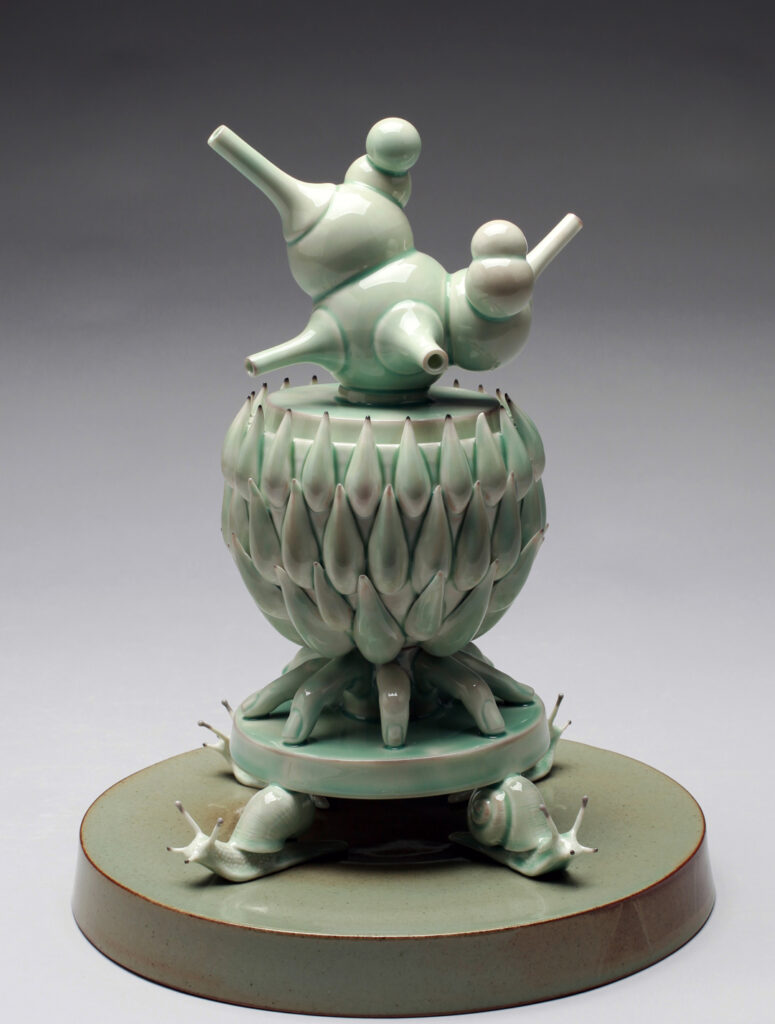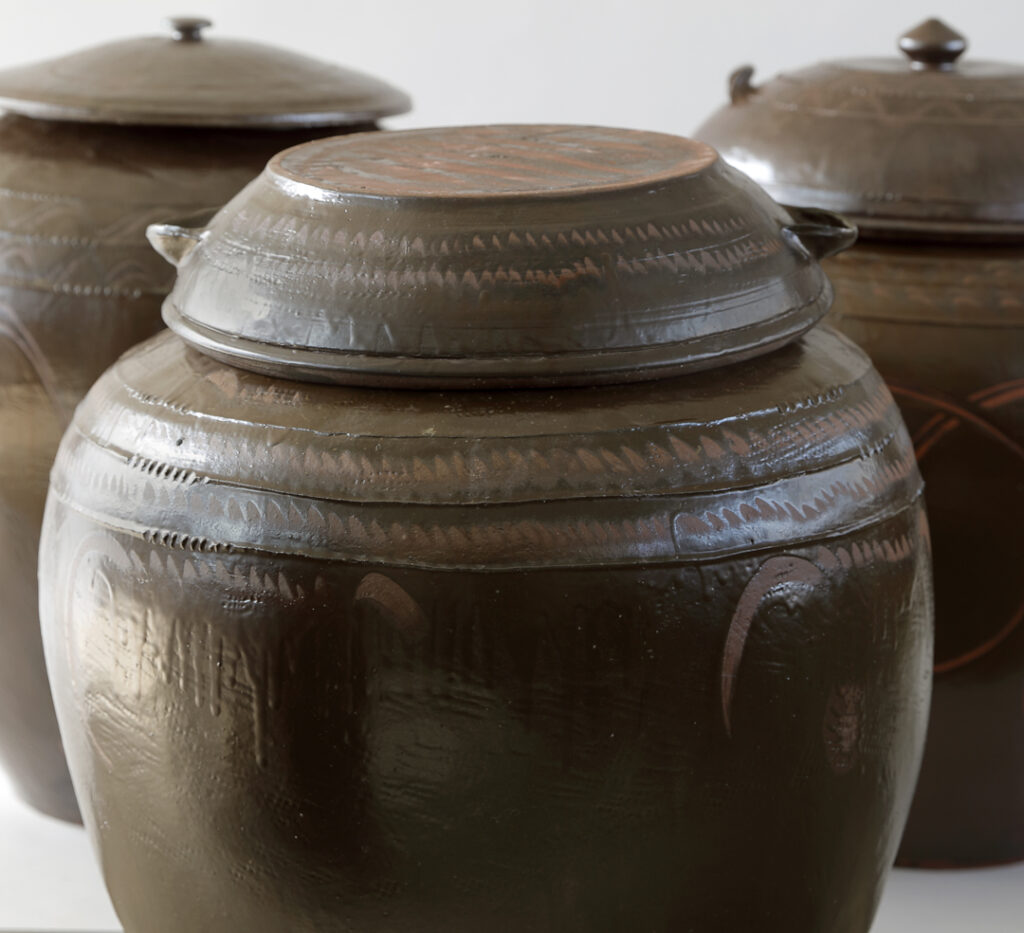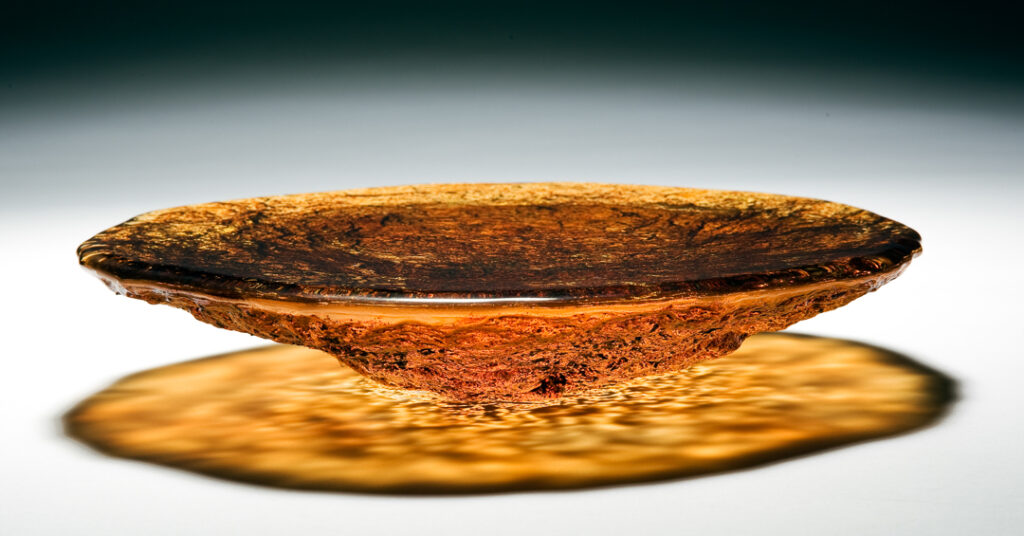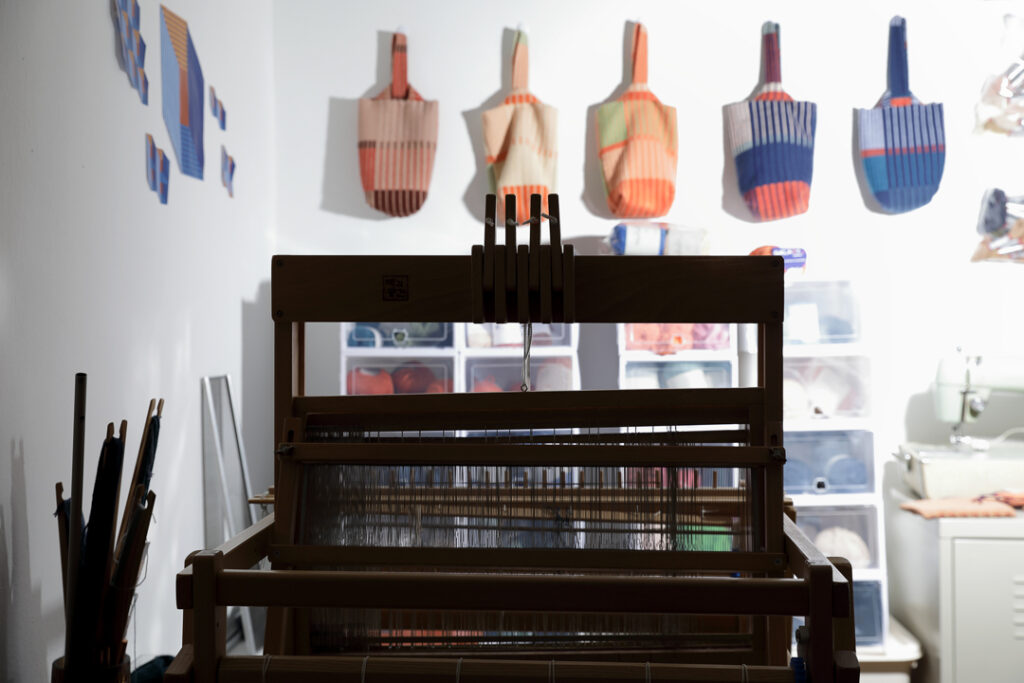
Wookjae Maeng, Remake, 2016, re-interpretation of the Goryeo Dynasty celadon Incense Burner; image courtesy of the artist
Hyeyoung CHO identifies the distinct aroma of Korean culture that imbues its authentic craft.
Every culture has a particular scent, and every person gives off a different fragrance.
In the more direct sense, fragrance in Korea historically was enjoyed for ritual purposes. The use of incense sticks and more began with the spread of Buddhism in Korea – 8th to 14th century. At the time only the people in high positions of the social hierarchy and those in religion were able to enjoy scents. Incense burners of the highest qualities were often made with elaborate decorations requiring highly developed skills. The openwork Goryeo Dynasty incense burner is the epitome of the sensibility that existed at the time. Wookjae Maeng re-interprets this in his own creative language. The technique required to make this burner is intricate, as on the top the openwork or piercing technique is applied while in the middle section, lotus leaves were individually made and attached. The bottom platform is supported by three rabbits. The scent comes out from the top open section.

Celadon Incense Burner with openwork, 9th to 10th Century, Goryeo Dynasty, National Treasure 95, image courtesy of the National Museum of Korea
Furthermore, incense burning is often associated with death, as we pay tribute to dead ancestors as a way of showing respect. Therefore in the Joseon Dynasty, incense burning was minimized. Only in recent years, scent has become a part of mind-relaxing practice among the MZ generation. The older generation still associates it with ancestral rituals. The article is not about scent in the direct sense, but it is about the fragrance of the Korean people and their temperament in terms of making craft. Scent can be interpreted in many different ways and here, I am focusing on today’s sensibility and tendency in craft.
In Korea, there is a sense of warmth deep inside everyone. Historically Korea has been a farming culture and because of that we still believe strongly in sharing even a single grain of rice. Korea has been a community-driven culture for centuries. Firstly the family has a strong presence in every Korean. There is a saying, “a gourd that spills inside the household will inevitably spill outside”. Maintaining harmony between family members is the most important and the saying reflects on keeping order and structure within a family. If one is able to manage the family well, then one is also likely to succeed in society. For centuries based on Confucian beliefs, this has been the core of Korean practice. Secondly, family-associated friends and connections are important just like school alumni. A close network is kept among the related people. Thirdly, neighbors and people in the living community are considered significant. Such Korean customs are referred to as onjeong (溫情) or injeong (人情)’. The closest translation to these words in the English language is “compassion”. This is a sensibility that cannot be felt anywhere else in the world and in my mind, it is the reason for the recent Korean phenomenon – K-Culture, K-Drama, K-Pop and more – the Korean Wave.
The compassion that is deeply embedded in the heart of the Korean people sometimes can be understood as being “nosy”, “interfering” and “tiresome”, as every petty little thing becomes a subject of interest to the average Korean person. The scent of such a characteristic is red and rather poignant like the chilli paste and kimchi that is an everyday diet of the Korean people.
The contemporary craft of Korea today is facing a major dilemma. One of the reasons for this is that young artists are so advanced in the use of social media—Instagram, Tiktok and more—that they become suspicious of craft education that is practised in universities. They access information faster than the professors teaching in craft departments, therefore what they are taught seems no longer an education that interests them. Often they question the experience and the knowledge of their own teachers, as they cannot keep up with the speed at which trends change. However, the young generation is a problem too. The speed at which Korean society moves affects all areas, and dwelling deep into any field of interest no longer seems to be something the MZ generation wants. The invention of the world-wide-web and the mobile phone has most definitely influenced the way the generation thinks today.
There is also the divide between making utilitarian wares, art objects and alternating between making and designing. The quickly changing nature of today’s society in my mind is based on capitalism. Craft a subject that is connected largely with time, labor and material, and today it is pressurized to change. Young artists are constantly racking their brains to figure out how they are able to make sufficient money through their trained skills in craft. Should one make and design utilitarian wares for restaurants, brands and corporations, or should one focus on developing one’s own creativity by making one-off fine craft pieces? Hardly anyone wants to make one-off objects that showcase their concept and philosophy, with an understanding of the material that they are mastering. Such a way of thinking today is avoiding the thousands of years of craft practice that have been handed down to us for centuries. The scent of earth, bamboo, wood, hemp and all the gifts nature has given to us is completely denied.
The preservation of our ancient old traits in craft is at stake. Although there is a system of designating intangible cultural properties each year by the Korean government, their craft skills are not being protected. Most of them are diminishing and I regret to state that in a few years, they will be gone. It takes about a minimum of ten to fifteen years to learn skills such as working with ottchil (lacquer) and mother-of-pearl, as well as making breathing food storage jars out of earthenware clay.
Korean craft historically has been practical. Most of the making is closely linked with understanding daily needs and nature. The onggi food storing jars, made with mineral-filled earthenware (only fired once) were a kind of refrigerator for the Korean ancestors. They understood what was needed to preserve food for a long time. As a result, the shapes differed according to region. For the hotter areas, the jars were round with large shoulders with a small opening (rim). In colder parts of the country, they were slender with large openings (rim). Different climates required different conditions when it came to sunlight and air circulations. Fermented food such as soya bean paste, soya sauce, chilli preserves, kimchi and more were kept for a long period of time. Wisdom collected from everyday living was reflected in craft objects, often scientific and at the same time artistic.
If one were to encounter a middle-aged Korean woman, in a regional town, there would be a lingering salty smell, like the sea merged together with garlic and spring onions. A Korean mother’s hands are permanently fixated with garlic and spring onions, as they are the main ingredients for practically all Korean dishes.

Hyangjong OH, Onggi Jars (Korean food storing jars made of earthenware), Jeolla-Nam Province (south-western region of Korea), 2017, image courtesy of the Korea Foundation of Craft and Design (KCDF)
Contemporary Korean craft developed largely in the 1970s. The movement started in the university environment as a conscious trajectory, controlled by the Korean government aiming to restore Korea’s cultural heritage.
In recent years, contemporary Korean craft has gained much international attention because of the Korean wave. Furthermore, artists have looked outside of Korea to sell their work as the Korean market for collecting and buying has remained stagnant. With the exception of a few, it is not easy to sell craft that is for appreciation.
The major characteristic of the younger craft generation in my mind is about finding their own individual voice. The warmth that is embedded in most Koreans can be a burden, as they have to think more about others than themselves. Consequently, the young people today, wish to “be rid of frills” around their lives. On the outside, they seem to get along well, but on the inside, they are thinking about other things. There remain contradictory values and a quirk that is almost schizophrenic. I find this fascinating.

Kyouhong LEE, Cast Glass, 2023, glass with ottchil and gold leaf, Loewe Foundation Craft Prize 2023, Finalist; image courtesy of Soluna Art Group, Korea
Metaphorically speaking, the scent of contemporary Korean craft currently is bland with hints of Westernized bergamot, musk and more. Korea is still heavily drenched in salty, earthy and grassy smells that connect us to nature. Korean food is the cause of our connection to the land, because our tastes are so poignant, from fermented food, we are almost compelled to consume our own food on a regular basis. Those who have immigrated to other countries, long for the homeland as the produce and the food call us back.
In my opinion, contemporary Korean craft is at a crossroads, and only now it is displaying its own voice with confidence. In May this year, I worked on exhibitions to present the finest of Korean craft, invested with time and labor in London, UK. The result was astonishing, and the label “Korean” was no longer important.
Previously, the Koreans believed among themselves “what is most Korean in terms of aesthetics, will also attract global attention”. There is a sense of nationalism in this statement, and through it traditional craft was the practiced norm during the 1990s. However today, with the internet and social media, the world has never been so closely bound together. Therefore, the West is putting more emphasis on the spirit and the mind, while the East is becoming more nihilistic. In that sense, our aesthetics is becoming more concept-driven at the same time as being calculative.

Solo Exhibition of Dahye Jeong, Loewe Foundation Craft Prize 2022, Winner; Working with horsehair based on the Joseon Dynasty Men’s Headwear of Korea, Cromwell Place, London, UK
With this in mind, I am curious to see how contemporary Korean craft develops in the future and how much competition we are able to secure with the rest of the world. Korean craft historically comprises natural colors as we have a tendency to remain true to what nature gives to us. We do not attempt to change the character of materials, but rather we try to give more life to it. Such is the authenticity of Korean craft and I think that this is the attraction factor.
About Hyeyoung CHO
 Hyeyoung CHO is a curator and chairperson, The Korea Association of Art and Design. She is on the expert panel, Loewe Foundation Craft Prize. She was 2021-2022; curator, Tongyeong Triennale, City Rejuvenation, Tongyeong, Korea; 2018-2019 Secretary General, Korea Craft and Design Foundation; 2017-2018 Guest Curator, Contemporary Korean Ceramics, Special Exhibition Victoria and Albert Museum, London, UK, 2016-2017 Guest Curator, C.C.C. Contemporary Korean Ceramics, Fondation Bernardaud, Limoges, France; 2015 Art Director, Cheongju Craft Biennale and 2013 International Commissioner, Gyeonggi International Ceramics Biennale.
Hyeyoung CHO is a curator and chairperson, The Korea Association of Art and Design. She is on the expert panel, Loewe Foundation Craft Prize. She was 2021-2022; curator, Tongyeong Triennale, City Rejuvenation, Tongyeong, Korea; 2018-2019 Secretary General, Korea Craft and Design Foundation; 2017-2018 Guest Curator, Contemporary Korean Ceramics, Special Exhibition Victoria and Albert Museum, London, UK, 2016-2017 Guest Curator, C.C.C. Contemporary Korean Ceramics, Fondation Bernardaud, Limoges, France; 2015 Art Director, Cheongju Craft Biennale and 2013 International Commissioner, Gyeonggi International Ceramics Biennale.



